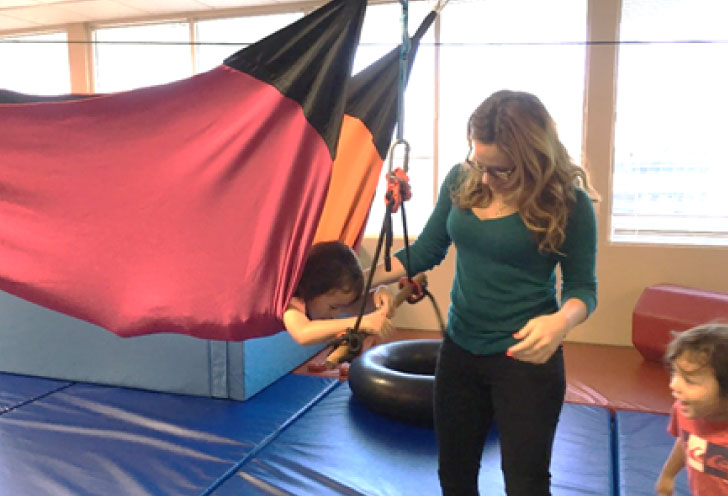AYRES Sensory Integration (ASI)

Originally developed by Dr. A. Jean Ayres starting in the 1960s, Ayres Sensory Integration® (ASI) is an evidence-based practice area, primarily used within occupational therapy. Sensory integration is the essential process of integrating the multiple and changing sensations from the body and environment, at all times, each and every day, to make sense of the world while informing actions and the way we feel while interacting. ASI is a neurologically-based theory about the way in which sensory information – from the body and about the world – is integrated and informs actions and interactions. It is also a therapeutic method for supporting this ability in people. ASI theory has evolved over the last 50 years, and its relevance and effectiveness have received increasing support from behavioral and applied science.
Ayres was unique in her contributions to occupational therapy, laying a foundation for evidence-based occupational therapy practice. She created a set of tests, the Sensory Integration and Praxis Tests (SIPT), that continues to be the template for the creation of more current evaluation tools such as the Evaluation in Ayres Sensory Integration (EASI), which is in the research stage of development (Mailloux, Parham, and Smith Roley, 2016). Additionally, she created questionnaires that later were developed into standardized tools such as the Sensory Processing Measure (SPM), and clinical observations that remain difficult to standardize but are useful, particularly when children cannot adhere to standardized performance assessments. These assessments are critical to identifying sensory deficits that are not easily understood by observation alone. Often the consequence of poor sensory responsiveness or deficient sensory perception is attributed to other issues such as attention, behavior, motor deficits, or emotional difficulties. Specific assessment of sensory abilities is essential to know whether these difficulties are present in an individual with or without other diagnoses.

Dr. Ayres invented sensory integration intervention methods with distinctive sensory equipment and iconic activities such as jumping in a ball pool or riding down a ramp on a scooter board. This method is now well defined and can be measured in studies using the ASI Intervention Fidelity Measure. Several randomized clinical trials have shown significant improvements using this type of intervention over usual care or alternative interventions. While sensory regulatory activities and accommodations are often useful, these techniques do not have the research support that direct clinic-based intervention has shown.
Outcomes to the ASI method of occupational therapy intervention are measured through skills such as increased construction or imitation but even more importantly through improvements in participation in daily life activities at home and at school. While the link between therapeutic activities in the clinic and participation at school is not always apparent, therapists who understand the link between brain function, perception, and participation are able to predict the benefits of these sensory and play-based activities and improved adaptation leading to happier, easier, and more skilled engagement in needed and desired activities.